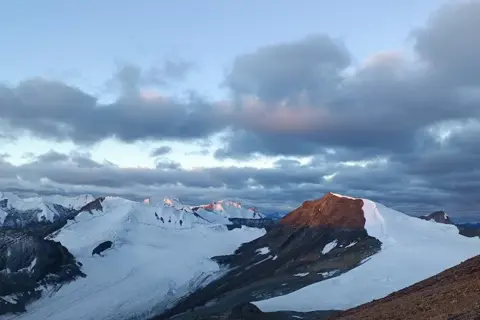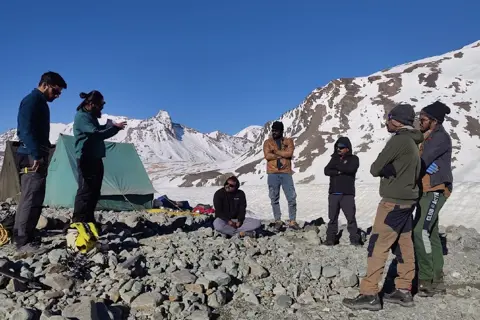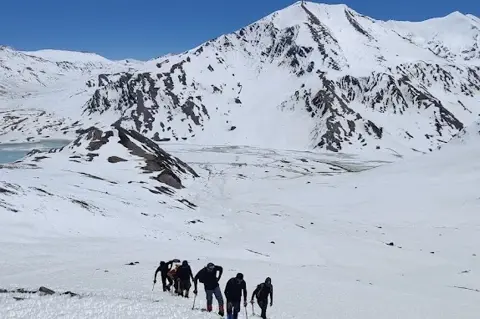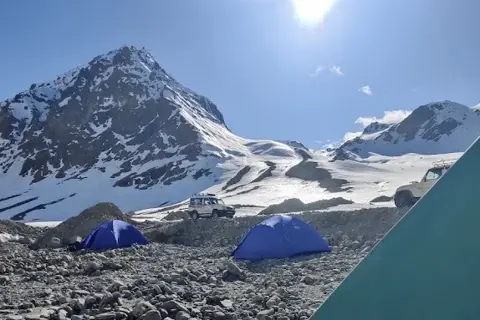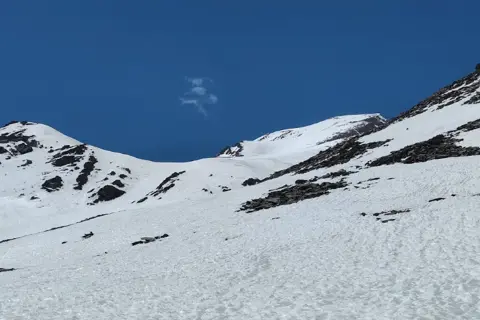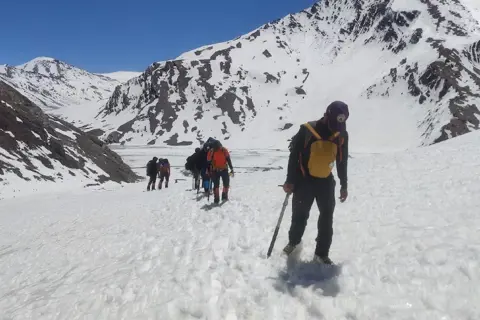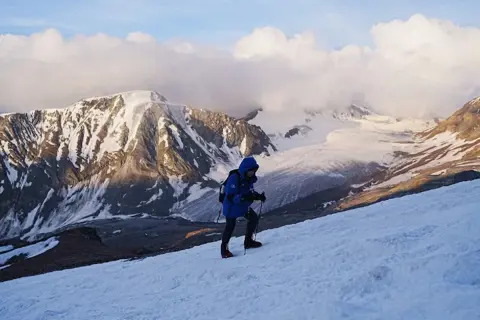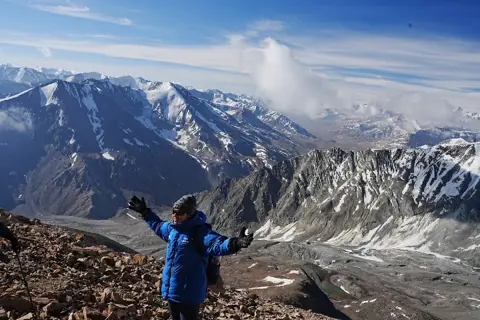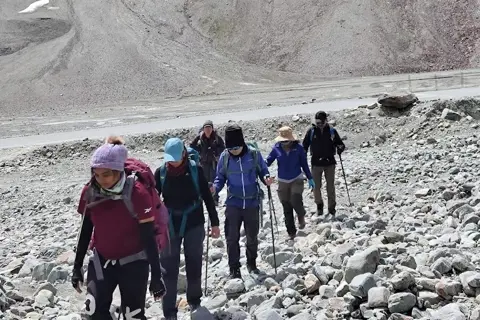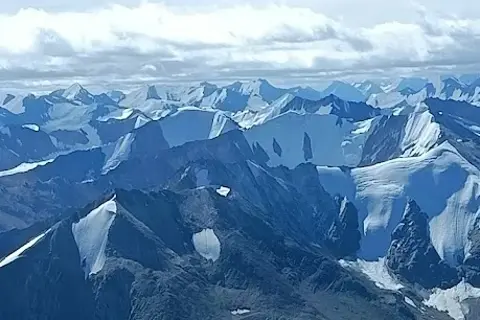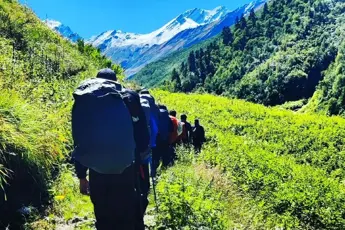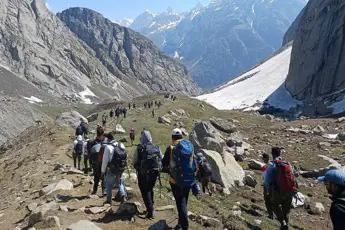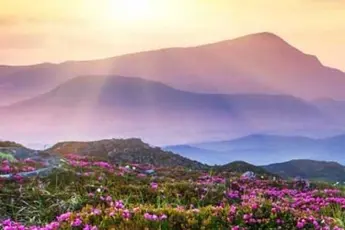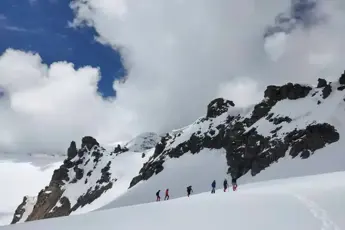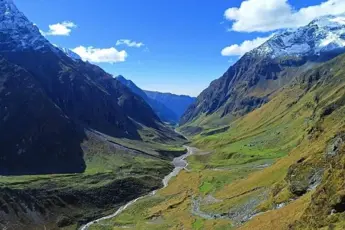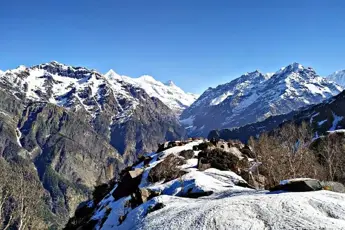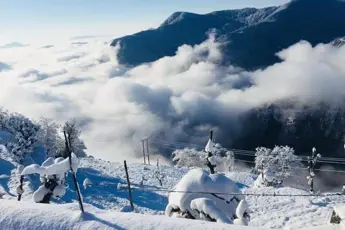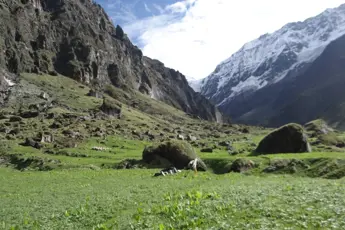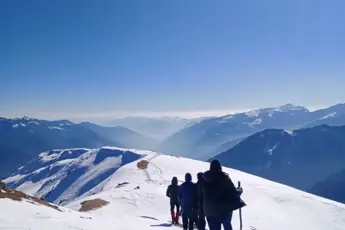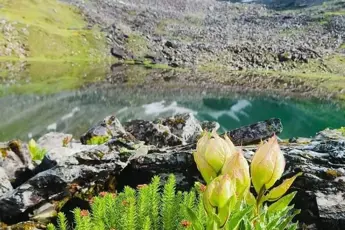The Yunam Summit is one of the most reachable 6,000+ meter mountains in India. An expedition is a thrilling, high-altitude adventure for trekkers. Nestled in the beautiful Lahaul area of Himachal Pradesh, close to the Indo-Tibetan border, Yunam Peak rises at around 6,111 meters (20,052 feet) and provides a great first foray to mountaineering for experienced trekkers wishing to ascend Himalayan titans. Reaching the summit is not the only goal of the trip to Yunam; it is about stretching personal boundaries in a setting at once difficult and incredibly beautiful. Beginning in Manali, the trip slowly climbs through distant mountainous communities like Jispa and Bharatpur. On this hike, acclimatisation is essential; so, rest days and brief hikes are incorporated to guarantee climbers are physically and mentally ready for the thin air and freezing temperatures. Demanding great resilience and endurance, the landscape ranges from frozen glacial stretches to rocky moraines and wide alpine meadows. The technical yet doable ascent of Yunam Peak draws adventure seekers. Though the summit calls for crampons and ice axes, it does not entail difficult mountaineering; hence, it is perfect for those moving from trekking to expedition-level climbs. With a profound sense of accomplishment as the sun climbs above the wide white terrain, the panoramic vistas from the summit are just breathtaking, snow-covered peaks running across the Zanskar and Great Himalayan ranges. Peak Yunam Expedition tests one's tenacity, patience, and high-altitude readiness; it's not only a walk. Those with previous high-altitude trekking experience and wanting to enter the field of mountaineering should find it ideal. Yunam Peak offers an amazing trip into the centre of the Indian Himalayas with the right direction, equipment, and will.History of Yunam PeakOver the last two decades, Indian and foreign climbers looking for a starting point into high-altitude mountaineering have found growing popularity at Yunam Peak in Himachal Pradesh's distant Lahaul area. Although it lacks religious or mythological significance like many Himalayan peaks, Yunam is significant for its geographical location, ease of access, and contribution to the current Indian trekking and trip environment. The area around Yunam Peak was once on historic trade routes linking Ladakh and Tibet to the Indian plains via Lahaul and Spiti. These desolate high-altitude paths were crossed often by merchants, travellers, and native shepherds. Though the actual peak was not scaled or investigated in antiquity, the surrounding valleys were well known to the local Gaddi and Bhotiya tribes, who expertly traversed the difficult environment. Because of its difficult weather and difficult access, the region remained almost unspoiled by contemporary research until the late 20th century.Mountaineers and explorers could only access this section of Himachal after the 1980s Manali-Leh highway was finished. Climbers started to see the symmetrical snow-covered Yunam Peak dominating the horizon as Bharatpur and Jispa became important stopping points along the trail. Early ascents in the late 1990s and early 2000s were mostly performed by army divisions and small independent teams trying to investigate high-altitude acclimation and navigation skills. Adventure firms saw the promise of Yunnan Peak as a perfect training ground for young climbers by the early 2010s. Unlike several 6,000-meter peaks that need technical climbing or extensive glacier travel, Yunam offers a rather nontechnical but physically demanding course. Its height qualifies it as ideal for acclimatisation as activities for those getting ready to climb Stok Kangri (before its closure), Mt. Nun, or even global summits like Kilimanjaro and Island Peak. Especially as Indian trekking culture has changed over the past ten years, the popularity of the Yunam Peak Expedition has shot up considerably. Yunam offers that next-level difficulty without excessive technical standards, as more people attempt to push their boundaries beyond well-known treks like Hampta Pass or Kedarkantha. Many adventure travellers find it logistically sensible as well because it is situated close to Manali. Yunam Peak has come to represent the change from trekking to actual mountaineering today. Many times, it is part of the curriculum of basic and advanced climbing classes. Rising interest in domestic adventure tourism and government aid for adventure projects have helped to further raise its prominence. Yunam Peak is still a rough and unrelenting scene even as it becomes well-known.Nearby Places around Yunam PeakBaralacha La Pass: This high spot in the hills sits 60 km from Yunam Peak. It rises up high, about 4,890 meters, and joins the Lahaul area in Himachal Pradesh with Ladakh. One can see snow-tops and this pass where paths meet from Ladakh, Spiti, and Lahaul. Trekkers stop here to get used to the high altitude and soak in the wild views of the big hills.Sarchu: Close to Yunam Peak, Sarchu is a loved spot for camps and night stays on the Leh-Manali road. It sits at 4,290 meters and wins hearts with its empty looks, starry nights, and bold camp vibes. It is also where many start their tall treks and trips in this cold land.Suraj Tal Lake: Right under the Baralacha La Pass is Suraj Tal, India's third-highest lake. Its blue waters come from snow that melts nearby. Locals hold it dear as a holy site. The water, with rough hills around, pulls in those who like to take photos and offers peace to trekkers and ones passing by.Zingzing Bar: On the way to Yunam Peak, Zingzing Bar is a high stop place at about 4,270 meters. It's mostly a rest spot for those on the Leh-Manali road, but its grand look offers a great place for taking photos and for visitors getting ready for more climbs.Keylong: About 120 km from Yunam Peak, Keylong is the main spot in Lahaul. It's noted for its Buddhist sites like Kardang and Shashur. Its quiet feel makes it a nice starting point for trips to far places.Jispa: A small, pretty town by the Bhaga River, about 100 km from Yunam Peak, Jispa is well-liked by trekkers and bikers for its cool air, simple places to stay, and nice river scenes. It’s also good for getting used to the high places slowly.Best Times to Visit Yunam PeakJune to September - Best Climb Time: The best time for the Yunam Peak Trip is from June to September. The weather is good, and the snow is mostly gone. The sky is clear, the day is warm, and the storm risk is low, good for walks and peak tries. The path is easy, and the views of the big hills are great to see.July and August - Full Green After Rain: Yunam Peak does not get big rains like other parts of India, but July and August have some light rain. This makes the grass green and flowers bloom, making the dry highland full of life and colour. Bring the right gear for any sudden weather shifts.September - Best for No-Snow Summit: Lots of climbers like September for trying to reach the peak without snow. It's still not too cold, and the clear sky gives good views of all around. The weather is stable, making it a safe time for the trip.October to May - Cold and Snow: From October to May is not good. It is too cold, with lots of snow, and the paths are hard to pass. It can be very cold, below -20°C, and the chance of snow slides or cold bites goes up. Most paths are shut, and trying for the peak is too hard without lots of climbing skills and gear.How to Visit Yunam Peak TripBy Airport: The nearest airport to Yunam Peak is Bhuntar Airport in Kullu, Himachal Pradesh, far of about 250 km. But, with few flights, most go to Chandigarh Airport or Delhi's Indira Gandhi International Airport for more choices. From there, take a car or bus to Manali, where the Yunam Peak trip starts.By Railway Station: The nearest big train stop is Joginder Nagar Railway Station, but it has few trains. A better choice is Chandigarh Railway Station or Pathankot Railway Station, then travel by road to Manali. From Manali, go on to start the walk at Bharatpur or Jispa, as per the plan.By Road: Manali connects well by road to big cities like Delhi, Chandigarh, and Shimla. Himachal Road Transport Corporation (HRTC) and private buses like Volvo run from Delhi to Manali. From Manali, go on towards Keylong and Sarchu, then to Bharatpur, the last spot cars can go to before the walk starts. This road gives great views and helps you get used to the highland.Why Book with escape2exploreWhen exploring the Yunam Peak Expedition and beyond, escape2explore stands out as a trusted name in adventure and experiential travel. Here’s why hundreds of travellers choose us for their getaways:Trusted, Well-Reviewed Local Operator: escape2explore has gained the trust of thousands of content tourists all over India. With persistent positive feedback and an unblemished reputation for delivering quality experiences, we assure you that your experience will be hassle-free, memorable, and value-packed. Our insider local knowledge guarantees that you will always be in safe hands.Seasoned Guides: Our trips are led by friendly, trained, and professional guides who are passionate about the outdoors and your safety. Whether it's a beach trek, a cultural tour, or a spiritual walk through temples, our team knows the terrain, the stories, and how to make each moment count.Safe & Curated Itineraries: Your safety is our number one priority. Our tour packages are thoughtfully crafted with safety measures, researched accommodations, and easy travel arrangements. We take care of the details so you can have the experience hassle-free and worry-free.Unique Experience That You Won't Find Anywhere Else: With escape2explore, you discover more than the tourist attractions. We go off the beaten track with hidden beaches, unusual treks, offbeat cultural destinations, and true interactions.







